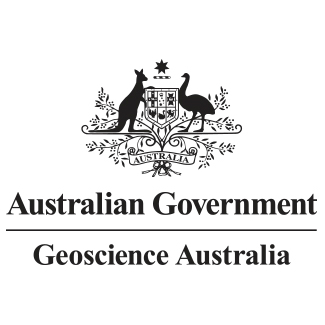Brief description
This resource includes bathymetry data acquired during the Kenn and Chesterfield Plateaux survey using Kongsberg EM302 and EM710 multibeam sonar systems. The Kenn and Chesterfield Plateaux bathymetry survey (FK210206/GA4869); also known as Seafloor to Seabirds of the Coral Sea survey; was led by the University of Queensland aboard the Schmidt Ocean Institute's research vessel Falkor from the 06th of February to the 05th of March 2021. The primary objective of the expedition was to map underwater landscapes in the Coral Sea, collect marine magnetic data and sample micro plastics from the ocean using the Falkor's underwater system and CTD casts. Another objective was to survey seabirds species and their concentration in space and time, which are important indicators of ocean health. The data collected from the expedition will help inform future management of the Coral Sea Marine Park and the data will be added to the Nippon Foundation -GEBCO Seabed 2030 Project. This V1 dataset contains one 64m resolution 32-bit floating point geotiff files of the new Kenn and Chesterfield Plateaux bathymetry, derived from the processed EM302 and EM710 bathymetry data, using CARIS HIPS and SIPS software. This dataset is not to be used for navigational purposes. This dataset is published with the permission of the CEO, Geoscience Australia.Lineage
Maintenance and Update Frequency: asNeeded
Statement: While AusSeabed aims to publish data to the level of adherence based on the requirements stated in the AusSeabed multibeam guidelines (version 1), we will also publish interim products (version 0) that are currently available, but have not yet been standardised (version 1). Users should be aware that V1 products will always supersede V0 products. This is a V1 product.
This dataset was produced using CARIS HIPS/SIPS v.11.3.7
1. A vessel configuration file was created where the co-ordinates of the motion sensor, DGPS antenna and patch test offsets were recorded..
2. A new project was created and the vessel configuration file attached to the project file.
3. The raw swath sonar data files, in raw.all format, for each line was imported into the project and the vessel information assigned to the data.EGM2008 model/vertical reference system is our first preference and when not available or possible to do so, a tidal zone data is the next preference to be applied to the data
4. The motion sensor, DGPS and heading data were cleaned using a filter that averaged adjacent data to remove artefacts.
5. Sound velocity profiles data for each block of the data were attached to the corresponding raw swath sonar data files.
6. A new blank fieldsheet area was defined that specified the geographic area of study and the co-ordinate system used.
7. The data was cleaned by applying several filters that removed any spikes in the data using user defined threshold values.
8. Data were inspected visually for each line where artifacts and noisy data had not removed by the filtering process.
9. Remaining spikes were removed manually using the swath and subset editor modules.
10. All the data, i.e. bathymetric sounding and ancillary data, were merged to produce the final processed data file
11. A weighted grid of the processed data was then created.
12. Independent velocity corrections were performed where velocity artefacts were observed.
13. The final processed grid was exported as a 32 bit floating point Geotif format at 64 m resolution referenced to egm2008.
Notes
PurposeIncrease the bathymetry coverage of the Australian waters.
Issued: 18 05 2021
Data time period: 2021-02-06 to 2021-03-05
text: westlimit=153.00; southlimit=-27.00; eastlimit=157.10; northlimit=-19.00; projection=WGS 84 (EPSG:4326)
Subjects
AusSeabed |
Bathymetric grids |
Bathymetry |
EARTH SCIENCES |
HVC_144641 |
Marine |
Multibeam |
Published_External |
geoscientificInformation |
User Contributed Tags
Login to tag this record with meaningful keywords to make it easier to discover
Other Information
Kenn and Chesterfield Plateaux Bathymetry 2021 64m (zip) [38.7 MB]
Identifiers
- DOI : 10.26186/145381

- URI : pid.geoscience.gov.au/dataset/ga/145381

- global : 82efa3a1-4429-4999-9204-348025b9db11


